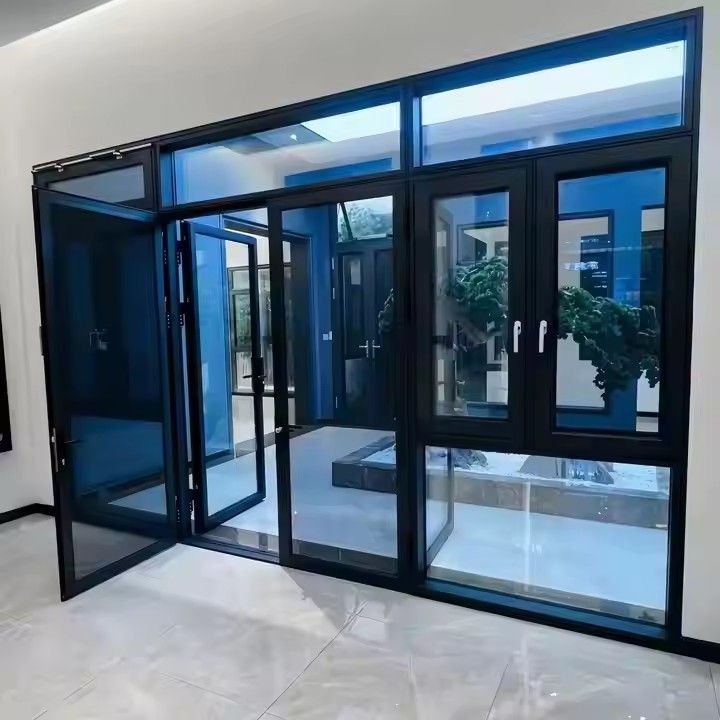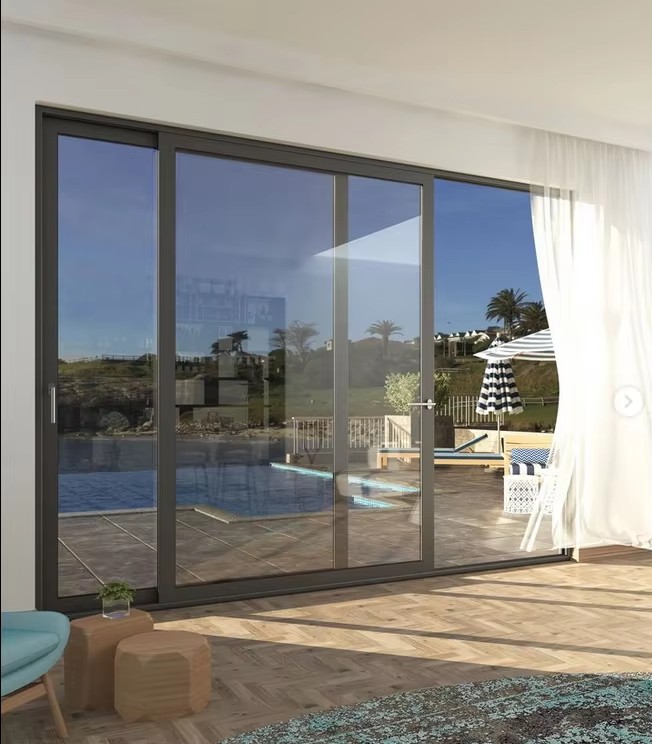1. Climate-Driven Adaptive Design: Rooted in Local Environmental ConditionsAustralia’s unique climate is the primary driver of awning design. The continent’s tropical and subtropical regions experience long hours of sunlight, extremely high UV radiation—among the strongest in the world—and frequent summer rainstorms, with some areas also facing strong winds and thunderstorms. These environmental factors directly define the core direction of awning design. When considering climatic adaptation, it is essential to research local weather patterns—for instance, if the area experiences heavy snowfall, thicker glass doors and windows would be necessary.
For sun protection, Australian awnings typically use high-density polyester fabrics and PVC-coated textiles designed for professional-grade UV resistance. Premium models often integrate UV-blocking technologies that effectively filter over 90% of UVA and UVB rays, protecting skin from harm while reducing indoor and outdoor temperatures. Light-colored fabrics such as beige, light gray, and pale blue are commonly used, as they reflect sunlight effectively and prevent heat buildup caused by darker colors—perfectly addressing the cooling needs of Australia’s hot climate.
To withstand sudden rain, Australian awnings feature enhanced waterproofing. The fabrics are treated with waterproof coatings, and seams are sealed using heat-press techniques to prevent leakage. Some models are equipped with motorized or manual retraction systems that allow quick closure during heavy rain or strong winds, preventing structural damage. For coastal areas prone to salt corrosion, metal frames are typically made from aluminum alloys and treated with anodizing or powder coating to improve corrosion resistance and extend service life.

- Function-Oriented Practical Design: Aligned with Outdoor Living Needs
Australians make extensive use of outdoor spaces—yards, patios, and poolside areas are often key zones for relaxation and socializing. This lifestyle drives awning designs to focus on high functionality and adaptability to various outdoor settings.
Space flexibility and adjustable coverage are core features. Most Australian awnings adopt retractable systems that slide along tracks or fold mechanically, allowing users to freely adjust the shaded area. They can fully extend under strong sunlight or partially retract on cloudy days to balance shade, light, and airflow. Some models even offer adjustable angles, enabling users to change the tilt according to the sun’s position for optimal shading.
Different configurations suit different applications: wall-mounted awnings for balconies and terraces, freestanding column models for open gardens, and portable versions for camping or temporary outdoor events—ensuring comprehensive coverage for all scenarios.
Integration of auxiliary functions is another major trend. Many awnings come with built-in LED lighting for nighttime use, extending outdoor enjoyment. Premium models include wind and rain sensors that automatically detect weather changes and retract the awning without manual operation. Some also feature side screens that enhance shading, block insects or breezes, and create a private, comfortable space ideal for outdoor dining or leisure.
- Aesthetic Harmonization: Ensuring Visual Unity with Architecture and Environment
Australian awning design emphasizes not only functionality but also aesthetic coherence with building facades and surrounding landscapes—turning the awning into an integral part of architectural beauty.
The prevailing design style is clean and modern, aligning with Australia’s minimalist architectural aesthetics. Frames are crafted from slim yet sturdy aluminum alloys to reduce visual heaviness and create an airy, transparent appearance. In terms of color, while light tones dominate, customization allows coordination with building exteriors and garden settings—for instance, light brown awnings for timber-style homes or dark gray options for contemporary minimalist houses—ensuring a harmonious blend rather than visual dissonance.

Customization plays a key role in aesthetic integration. Manufacturers often offer tailored solutions based on architectural structures, space dimensions, and user preferences. Examples include curved awnings for arched balconies or asymmetrical designs for irregular courtyards, ensuring a perfect spatial fit. Some clients even opt for minimalist patterns or brand logos printed on the fabric, achieving personalization without compromising visual harmony.
Material texture is another design focus: matte fabrics reduce glare and visual discomfort, while finely coated metal frames elevate the sense of quality. Combined with greenery, stone, and natural materials, the overall effect is elegant and cohesive.
- Structurally Secure and Durable Design: The Foundation for Long-Term Reliability
Given Australia’s variable weather and frequent outdoor use, awning structures prioritize stability, safety, and long-lasting durability to ensure reliable performance over time.
Structural integrity is reinforced at every level. Frames are typically made from high-strength aluminum alloys or stainless steel—balancing robustness with lightweight convenience for easier installation and operation. Connection points use reinforced bolts and welded joints to enhance overall strength, allowing resistance against strong coastal winds. Many products undergo wind-load testing to verify stability under specific wind conditions.
Base structures are engineered for load-bearing safety: wall-mounted models are secured with expansion bolts into solid walls that meet weight-bearing standards, while freestanding versions feature weighted bases or are anchored to the ground to prevent tipping. Above all, safety remains the top priority—because only a structurally secure awning can provide true long-term usability.

